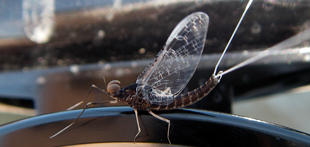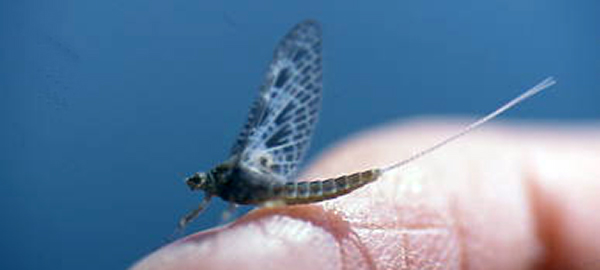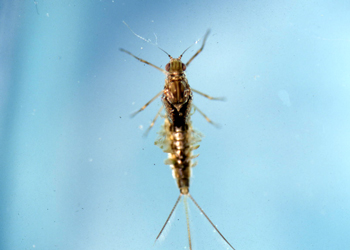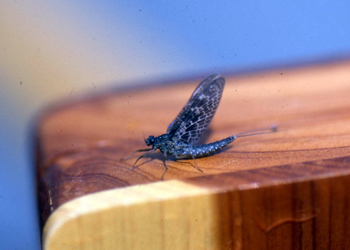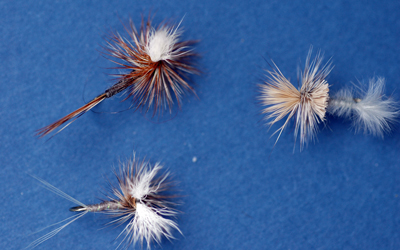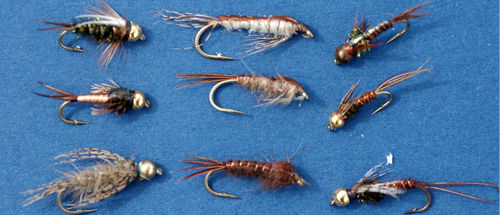|
|
|
Hatches - Mayflies
Mayflies are common inhabitants of many productive stillwaters. The majority of mayflies we see in small interior BC stillwaters belong to the Baetis Family and Genus Callibaetis. They are commonly known as Speckle-wing mayflies. Preferred habitat for the nymphs is the submergent and benthic vegetation covering the shallow water or shoal zones of the lake. The most abundant populations are found in those clear water lakes with abundant marl and chara lined shoals. Marl looks like a white or yellowish-white sand covering the lake bottom. It is actually calcium laden particulate that has formed a shallow layer covering the bottom of the shoals. Chara or Stonewart is calcium encrusted green algae that are prominent in alkaline stillwaters throughout North America.
Most mayflies have a one-year life cycle and as their name suggests their most intense emergences to the adult stages typically occur in the spring to early summer months. Trout feed heavily on the short but intense emergence swims of the mature mayfly nymph. They swim en masse on a shallow angle to the surface of the lake to emerge into the sub-adult or dun stage.
Mayfly nymph fishing is typically done on the shoal or in water less than about 25 feet in depth. Trout also feed on the partially emerged nymphs as they struggle to break through the surface film. Newly emerged duns are again easy food items for foraging trout. Splashy surface riseforms are the telltale sign that trout are picking off the adults as they sit on the surface film.
Trout also feed on the immature or juvenile mayfly nymphs that live amongst the rooted vegetation and chara masses that cover the shoal areas of the lake. The immature mayfly nymphs show up most commonly in the diet of trout during the fall months.
Imitating the various life stages of mayflies and their movement through or on the water is best accomplished with floating and intermediate sinking flylines. A floating line with varying leader lengths will allow you to cover any depth zone from a few feet to over 20 feet in depth. The clear intermediate fly lines like the Rio Aqualux are also effective in imitating the shallow angle of ascent of the mature nymphs.
|
|
|
STILLWATER SEMINARS * GUIDING * HOSTED TRIPS
HATCHES:::Mayflies
|
|
|||||
 |
|
 |
|||
|
|
